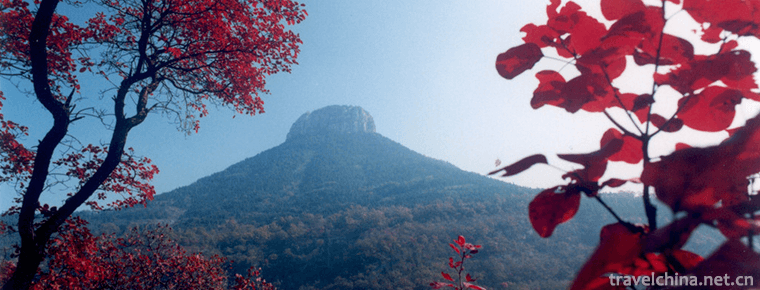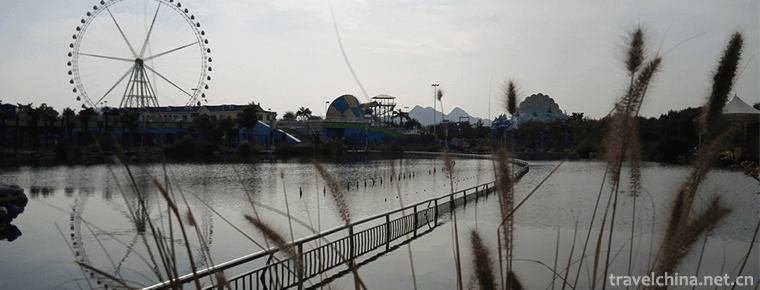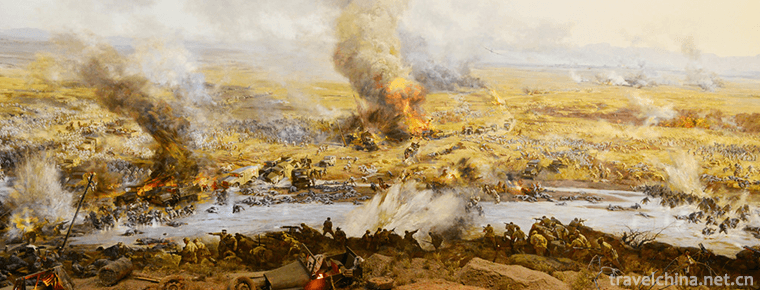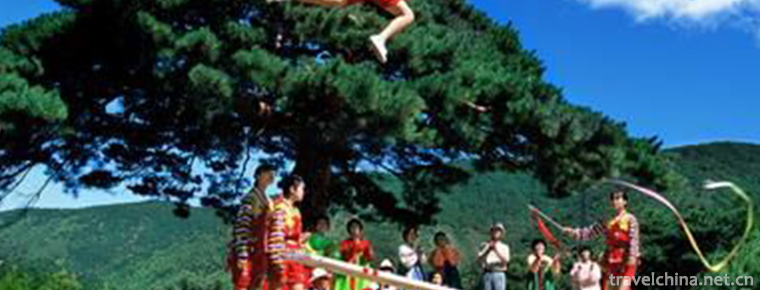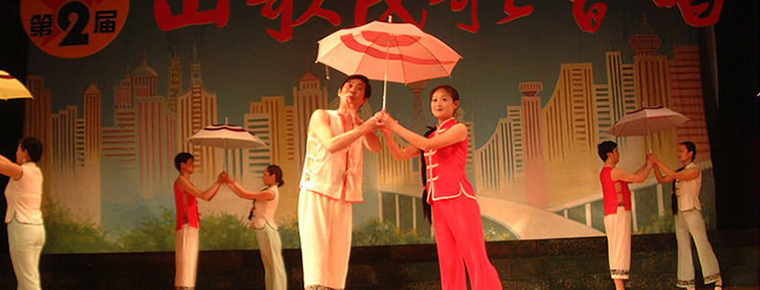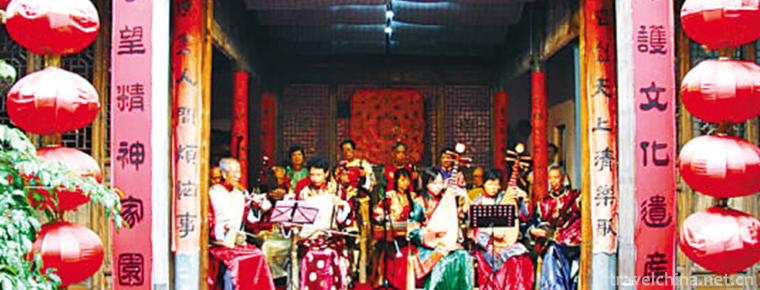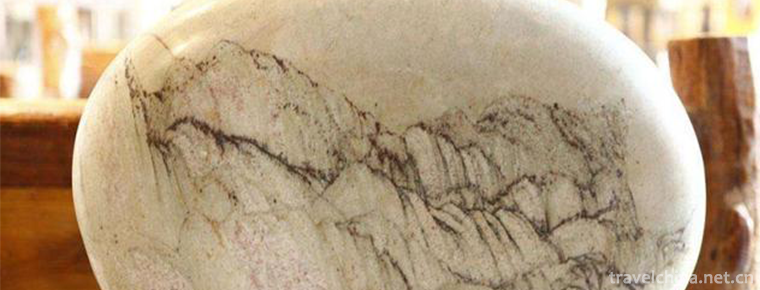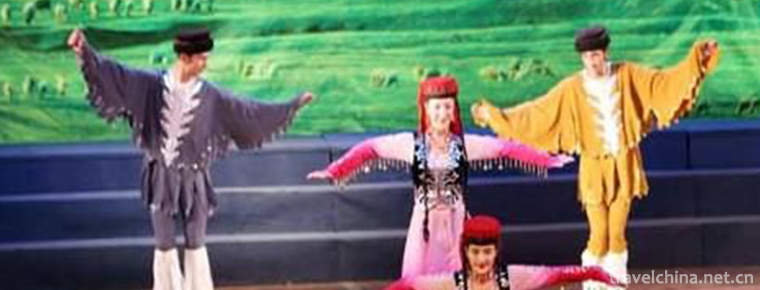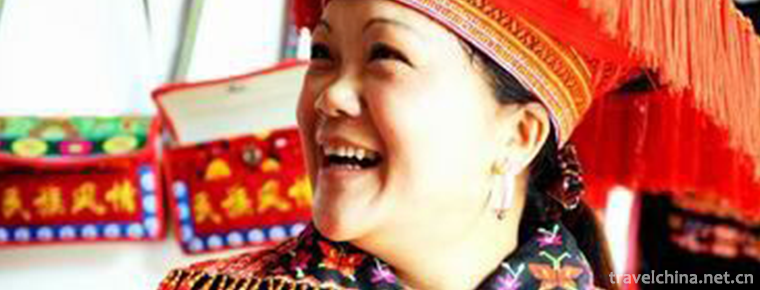Bamboo horse
Bamboo horse
Bamboo horse, also known as running bamboo horse or playing bamboo horse, is an ancient traditional folk dance. The art form of singles performed on the street is like the "two ghosts wrestling", "pig eight back guard daughter-in-law" and "Fire Meteor". Because it's a single performance, it's difficult to perform. The performer must have some wonderful performing skills in order to win the audience's welcome. It is a common program in China's folk society fire, with a wide range of activities. The earliest performers who performed bamboo horse were all male actors. By the 1970s and 1980s, the performances of actresses running bamboo horse emerged. Their performances were dynamic, delicate, lively and elegant, and their beautiful costumes made the bamboo horse running show beautiful and beautiful.
There are also bamboo running club fires performed by seven or eight-year-old children. Their performances are very lively and lovely, and they are loved by the audience.
Historical Evolution
The earliest record of the common custom of "bamboo horse" in historical documents is Guo Jizhuan in the Book of Later Han Dynasty. It is recorded in the Book of the Later Han Dynasty that there are hundreds of children riding bamboo horses and visiting each other from the beginning to the Xingbu and Xihe Meizhi.
After the Eastern Han Dynasty, "Bamboo Horse" was officially advocated as a way of playing for children. At the same time, it incorporates a lot of human and political colors.
The Tang Dynasty began a new era of "bamboo horse" entering poetry. "Bamboo horse" has developed and changed a lot during the centuries of inheritance of the Tang Dynasty. This laid the foundation and prepared conditions for the emergence of such artistic projects as "bamboo circus" and "bamboo horse lantern" after the Tang Dynasty.
After the Tang Dynasty, "bamboo horse" evolved and developed into "bamboo circus", "bamboo horse dance", "bamboo horse lantern" and other artistic forms, which were widely popular among various nationalities and became a bunch of flowers in the art forest of the Chinese nation. In the Song Dynasty, besides the original form of a bamboo pole or wooden stick, the drama of "bamboo horse" had appeared as a "horse head" made of bamboo strips and pasted with paper, with nose, eyes, ears and bristles, but without a horse body. Children riding "horses" tie a belt around their neck and a "horse's head" under the belt. A long bamboo with green leaves is attached to the back, which symbolizes the "horse body". In the well-known Wulin Old Stories of the Southern Song Dynasty, it is said that there were "male and female bamboo horses" in the New Year's Eve dance team of Linan (now Hangzhou, Zhejiang).
Manufacturing method
The bamboo horse is composed of two parts: the head and the front half of the horse are one part, and the back half of the horse is one part. The concrete method is: first make the moulds of horse head and neck with clay, then laminate the moulds with linen paper multilayer. After the paper is dried, cut the moulds from the center of the horse head, take out the moulds, leave the paper shells, and then glue the two pieces of paper shells together to form an empty shell paper pasted horse head model prop with horse neck, front horse body. With the back horse body is a semi-circular skeleton bound with bamboo slices, the skeleton surface is pasted with hemp paper, and the horse tail is made of hemp. When mounting the head, neck and body of a horse, it should be wrapped in crimson or black velvet cloth. The final decoration is made of proper materials and colors, such as horse mane, bridle and string bells. It should be noted that when the front horse body is connected with the neck part of the horse head, some space should be left so that the horse head can move up and down freely. When the rear body is connected with the ponytail, the ponytail should be able to move left and right. The front and back horses should have a tie and rope tied to the rider. When performing, the props of the horse are tied to the waist of the performer. The performer pulls the reins of the horse with his left hand, holds the whip in his right hand, and runs like a real horse. It is elegant and beautiful.
Running bamboo horses do not need to make their own props. They can be bought in cultural goods stores. It is very convenient. The props purchased are exquisite, beautiful and decorative.
artistic characteristics
Running slowly on bamboo horses
form
The main performance steps of Qingxu Bamboo Horse Running are breaking trot and breaking trot. The acts of the performance are as follows: the horse's head is raised like a roaring horse in the sky, the horse's tail behind it is like resisting the enemy's attack, the horse lies down, the horse bites the silkworm and so on. The performances of running bamboo horse mainly take the form of walking, and there are more than ten traditional forms of running field, such as "double entrance", "water sliding", "around eight characters", "cross step", "scissors" and "running round field". The costumes of bamboo horse runners are usually classical Tang costumes, and there are also performances of small costumes. The quality of clothing depends on the economic conditions, and there is no need to force it.
Running bamboo horse, as a traditional form of folk society fire, is still required by the traditional performance method. The performers not only perform horse-running, but also perform horse-running on the stage, singing local minor, Taigu Yangge, opera and other tunes. It is very popular with the audience. Running bamboo horse only performs simple performances, and its singing has been lost.
Musical accompaniment is the main Gong and drum band accompanying the social fire performance team.
origin
The origin of "bamboo horse" is said to have been planned by horse herders, horse dealers and horse charmers who run horses all the year round. Because of their deep affection for horses, they always want the image of horses to appear in the New Year's Festival Fire Team, but they can't ride real horses to participate in the performance. So creative horse props, decoration in the performer's body, to participate in social activities. There are also legends that when men and women get married, men ride horses and women ride sedan chairs. They are creative according to the image of men riding horses. Legend has it that it has a history of hundreds of years. It is a popular folk art form in Jinzhong area of Shanxi Province and Qingxu ground. It is characterized by strong flavor of life, strong national character, lively performance, natural elegance and beautiful appearance.
Huangpi Bamboo Horse
In Huangpi District of Wuhan City, there is the saying of "the lamp of Zhang Jiachong, a bamboo horse on Yuanjipo". Historically, the bamboo horses in Yuanjipo Village, Yuanjipo Bay, Changxuanling Street, Huangpi District, are more famous. Bamboo horse performers are seven, with the "horse boy" as the central figure and six others, accompanied by gongs and drums, and the dancing horse boy can instruct others to sing and do a variety of action performances. Generally choose a story as the content. Playing with lanterns is popular in Huangpi Xiaogan area (Huangxiaogan area). Playing with lanterns in Huangxiao area is a kind of rural temple fair that combines "lion dance, dragon dance, color boat, bamboo horse race, stilt walking, fish lantern and mussel shell essence". In the early 1930s, Liu Guanzhang, a story of the Three Kingdoms performed by artists from Yuanji Powan, was well received by the people of Wuhan and Huangpi. Playing bamboo horses in the old society was, for most people, based on interests and hobbies, followed by the rich and happy. Now it's different. Villagers spontaneously celebrate the New Year and hold lantern parties. Playing on bamboo horses is mainly on the thirteenth, fourteenth, fifteenth and sixteenth days of the first lunar month each year.
Pingyao Bamboo Horse
Pingyao bamboo horse is commonly known as "small bamboo horse", "bamboo horse", "lantern horse". In the mid-Ming Dynasty, Pingyao County, Shanxi Province, rose and spread to the present day. Bamboo horses are made of bamboo bark or bamboo strips, covered with yarn and painted. The bamboo horse is divided into two parts, front and back, fixed in the front chest and back waist of a boy of twelve or thirteen years old. The boy was wearing small brass bells. The Bamboo Horse Team is generally composed of 14 children. Twelve bamboo horses show the twelve zodiac signs. The first one is called "horsehead", which is directed by the dust in the theatrical performance. The second one is "horsetail". The other performers hold the whip and run like a horse, accompanied by the sound of bells, like ten thousand horses galloping. At night, bamboo horses put candles on their bodies, and the performance is particularly beautiful. Nancheng Village, Gutao Town, is famous for its bamboo horse performance. There are programs such as Snake Molting, Turning over, Double Eight Dialects, Monotone, Scissors, Eight Dialects, Bamboo Horse, Headless, Three Rings with Ears and so on.
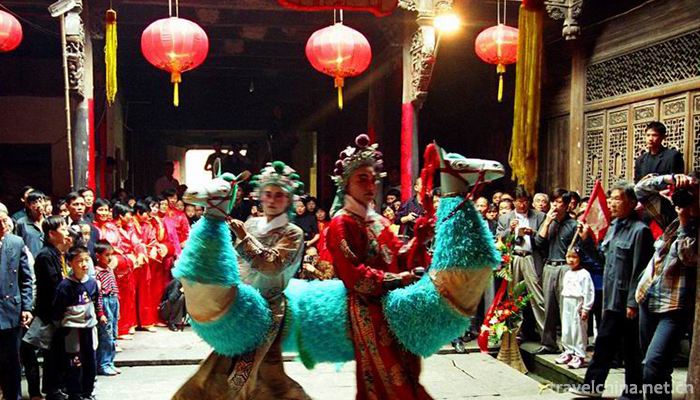
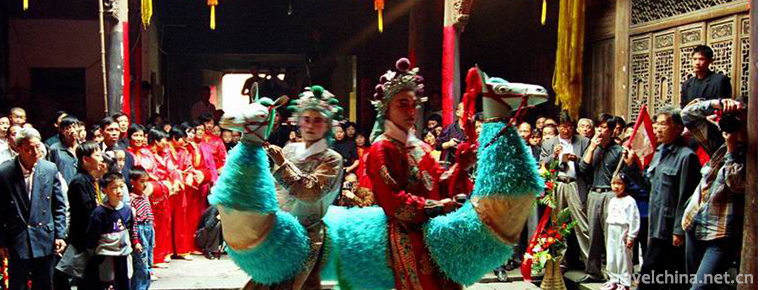
Bamboo horse
-
BaoGuGu National Forest Park
Baoqianggu National Forest Park, Shandong Province, is located in the southeast of Shanting District, Zaozhuang City, Shandong Province. Its geographical coordinates are 34 degrees north latitude 59'4
Views: 182 Time 2019-01-02 -
Jinan International Park Expo
Jinan International Park Expo Park covers an area of 5176 Mu and is located in Jinan University Science Park. The Lake area is 1440 mu. It is the largest land park in China
Views: 143 Time 2019-01-21 -
Laiwu Campaign Memorial
Laiwu Campaign Memorial Hall is situated on the Huangshan Mountain in Laiwu District, Jinan City. It covers an area of 45,000 square meters and has a building area of more than 8,000 square meters
Views: 157 Time 2019-01-29 -
Yangtze River Source of Tuotuo River
Tuotuo River: Located in Tanggula Mountain Town, Southern Region of Golmud City, Qinghai Province, it is the West source of the Yangtze River, south of the Hoh Xili Mountains.
Views: 236 Time 2019-02-22 -
Korean Springboard and Swing
Springboards and swings are the most popular traditional folk sports for Korean women, and they have a broad mass character.
Views: 218 Time 2019-04-16 -
Haimen mountain song
Haimen Mountain Opera is a traditional opera popular in Haimen area of Nantong, Jiangsu Province. It originated from Haimen Mountain Song and developed into
Views: 372 Time 2019-05-02 -
Tune in the sea
Linhai Ci Tune, also known as Taizhou Ci Tune, Talent Ci Tune and Xianhe Tune, is developed from Nanci, Kunqu and Taizhou local folk minor. It is one of the folk songs of Taizhou, Zhejiang Province. I
Views: 265 Time 2019-05-13 -
Stone Appreciation Art
In the form of both pictures and texts, Stone Appreciation Art popularizes the knowledge of Stone Appreciation Art to readers, especially young readers.
Views: 164 Time 2019-06-13 -
Tajik Eagle Dance
Tajik Eagle Dance, a folk traditional dance in Tashkurgan Tajik Autonomous County of Xinjiang Uygur Autonomous Region, is one of the national intangible cultural heritage.
Views: 260 Time 2019-06-17 -
Yao Costume
Yao people used to call themselves "Guoshan Yao", "Hongtou Yao", "Dabanyao", "Pingtouyao", "Blue Indigo Yao", "Shayao" and "Baitou Yao&
Views: 309 Time 2019-07-11 -
University Of International Business And Economics
The University of Foreign Economic and Trade is a national key university directly under the Ministry of Education. The first batch of "211 Project" and the first batch of "double first
Views: 132 Time 2019-09-22 -
Longchi National Forest Park
Longchi National Forest Park is located in Dujiangyan City, Sichuan Province. It is only 84 kilometers away from Chengdu and 30 kilometers away from Dujiangyan. It is one of the 20 key national forest parks in China.
Views: 234 Time 2020-11-05
